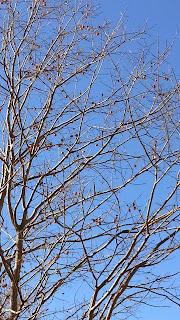I have visited the Spruce Knob area on an earlier backpacking trip in the late spring, but this was my second hardcore winter backpacking trip, and definitely the coldest. The temps at the trailhead when we started hiking Friday was 6*. The temp Friday night hit -3*. Saturday was a beautiful day, with temps of 30's for a high, and 15* for a low.
Our hike in was a fairly easy 3.5 miles, with half the miles going straight up to the ridge, and the other half going down the valley to the creek and the campsite.
This video was actually all shot with my cell phone, a Galaxy S3, because the cold killed my camera battery very quickly. I am really surprised it turned out as well as it did.









